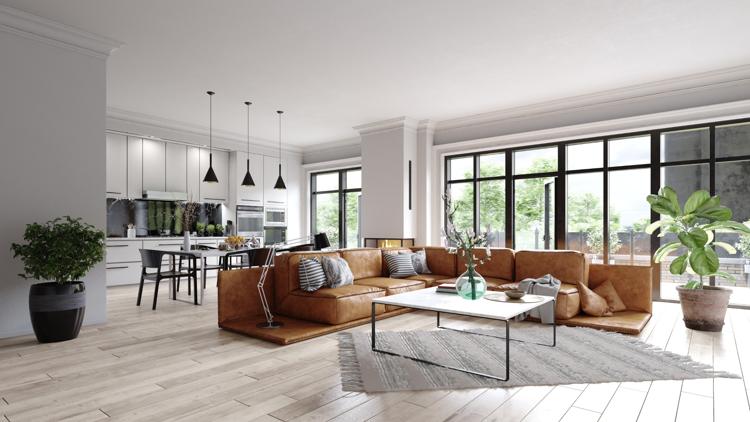
When it comes to upgrading your floors with LVP (Luxury Vinyl Plank), one of the biggest decisions you’ll face is choosing between click-lock and glue-down installation methods. Each has its benefits, but which one fits your needs best? Let’s explore both options in detail to help you decide.
What Is Click-Lock LVP Flooring?
Click-lock LVP, also known as a floating floor, uses an interlocking system to connect planks. No adhesives are required. The planks “click” together and rest over the subfloor without being attached to it.
Advantages of Click-Lock LVP
-
DIY-Friendly: Perfect for beginners. No glue means less mess and easier cleanup.
-
Fast Installation: Click-lock is quick to install. Great for weekend projects.
-
Easy to Replace: Damaged planks? You can remove and replace them with ease.
-
Ideal for Temporary Spaces: Perfect for rentals or areas you plan to remodel again.
Where Click-Lock Works Best
-
Bedrooms
-
Living rooms
-
Upper floors
-
Apartments or rentals
What Is Glue-Down LVP Flooring?
Glue-down LVP is adhered directly to the subfloor using special flooring adhesive. It provides a permanent, secure bond that holds up well over time.
Advantages of Glue-Down LVP
-
More Stability: Great for heavy traffic and commercial use.
-
Thinner Profile: Often allows for smoother transitions between rooms.
-
Quieter Underfoot: No floating effect or hollow sound.
-
Better for Larger Areas: Especially in open spaces where expansion could be an issue.
Where Glue-Down Works Best
-
Kitchens
-
Bathrooms
-
Commercial spaces
-
Basements
Key Factors to Consider When Choosing
1. DIY Experience Level
If you’re new to flooring, click-lock is the safer bet. It requires fewer tools and less technical skill.
2. Type of Subfloor
Glue-down works best on smooth concrete or plywood. Uneven or soft subfloors may benefit from a floating floor.
3. Moisture Conditions
Glue-down is more moisture-resistant. It’s better for bathrooms or basements where water may be a concern.
4. Time and Labor
Click-lock installations can be completed faster and with less effort. Glue-down takes longer due to drying time and more precise prep work.
5. Longevity and Durability
Both options are durable, but glue-down edges out slightly in terms of stability and resistance to movement under heavy use.
Installation Tips for Both Options
Click-Lock Installation
-
Let planks acclimate for 48 hours.
-
Use spacers for expansion gaps.
-
Work row by row for a seamless finish.
Glue-Down Installation
-
Thoroughly clean and level the subfloor.
-
Use the correct adhesive as per the manufacturer’s guide.
-
Allow ample drying time before walking on the floor.
Where to Buy LVP Flooring
When you’re ready to purchase high-quality LVP flooring, check out:
-
Home Depot – Offers a variety of LVP flooring styles at competitive prices.
-
Lowe’s – A great option for finding durable and stylish LVP flooring.
-
Furnish My Place Flooring – Specializes in affordable and high-quality flooring solutions.
Final Thoughts
Choosing between click-lock and glue-down LVP flooring comes down to your space, lifestyle, and installation preferences. Click-lock is easier and quicker for DIYers. Glue-down provides better stability in moisture-prone or commercial areas. Evaluate your project goals and make the smart choice for your home.